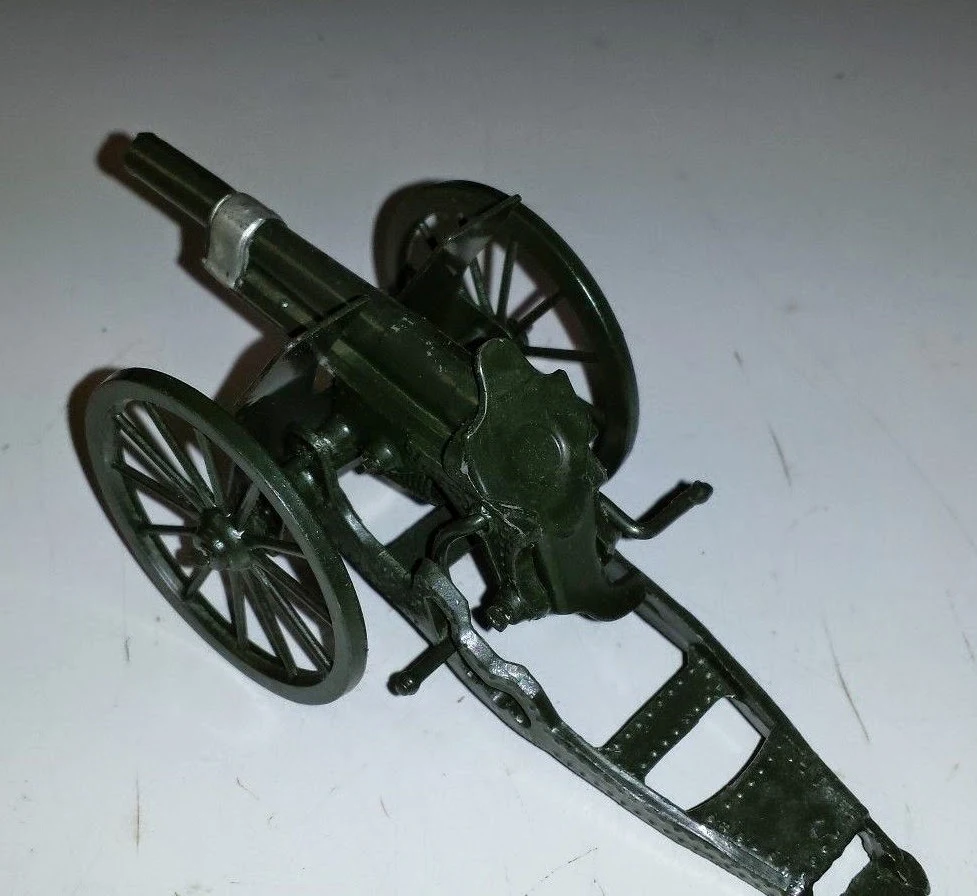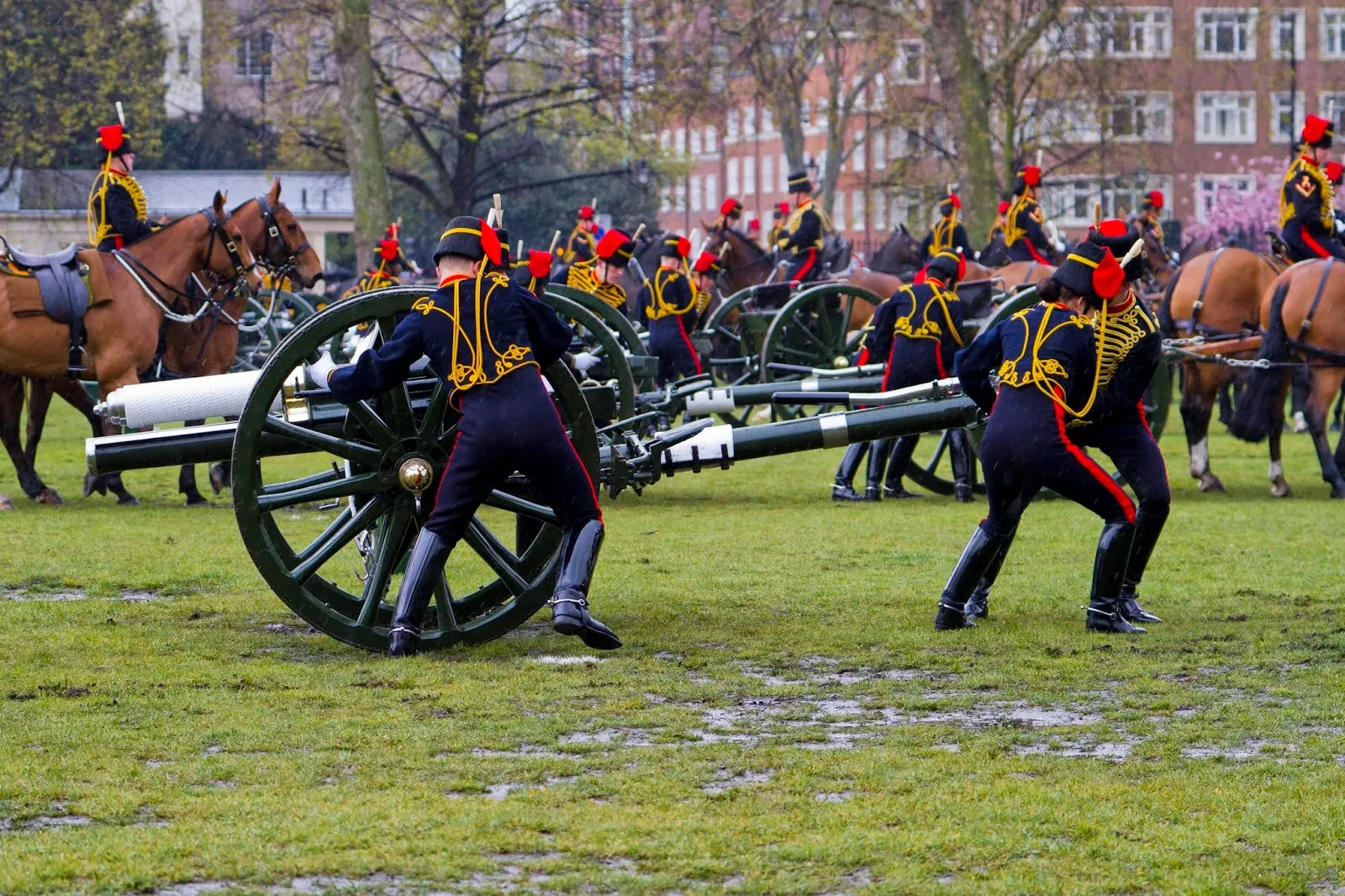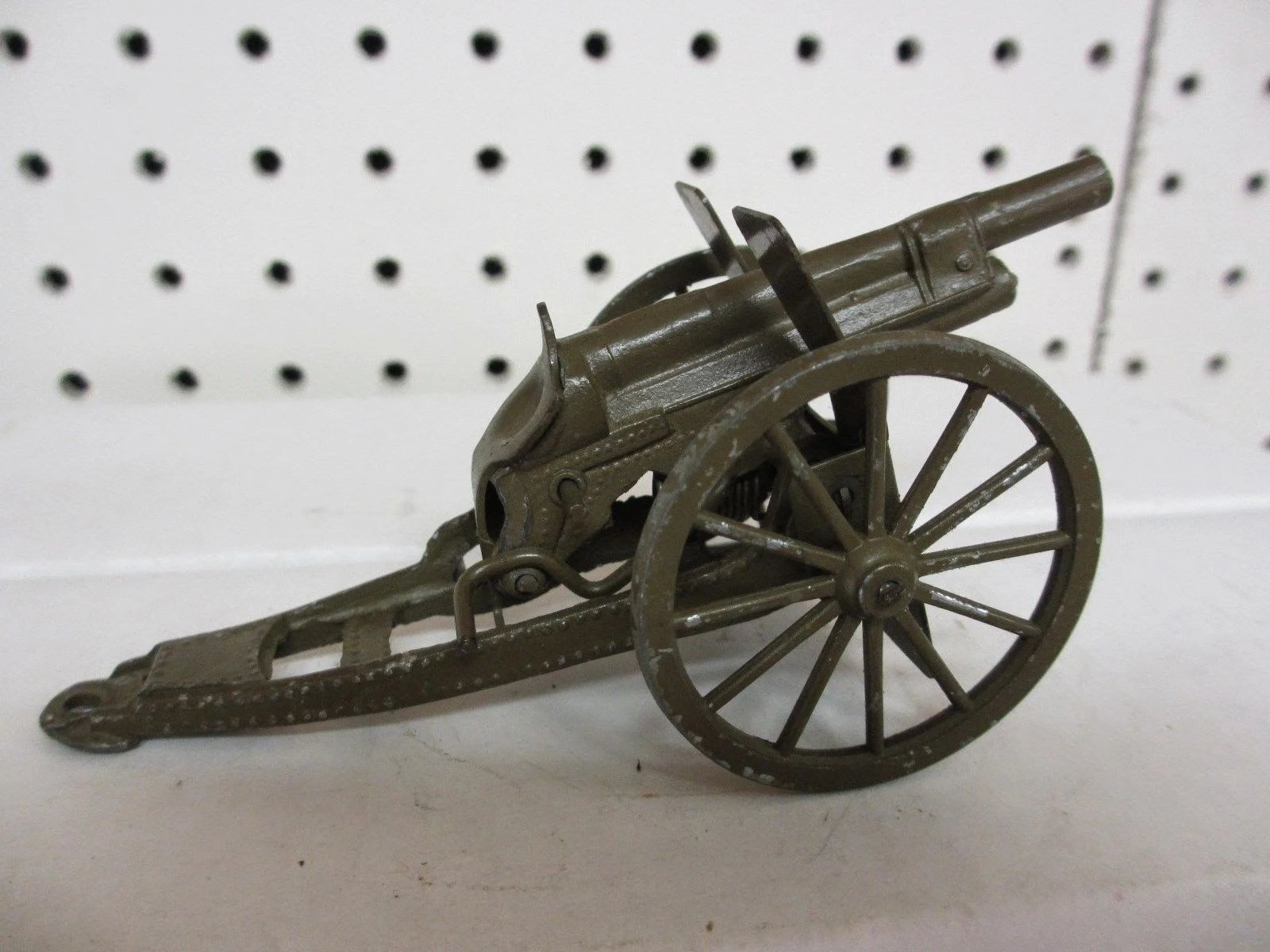The first “set” of W. Britains I acquired as a child I still
have, but it was not a set of toy soldiers, but a field gun. Set No. 1201 Royal
Artillery Gun, was one of many magnificent fully operational model guns
Britains produced to accompany their sets of toy soldiers. It appears to be an
accurate copy of the Ordnance, Quick-firing, 18 pdr, used extensively by the
British Army as it’s standard in World War I. The toy gun was produced from
1932 to 1967. It came in at least two colors I'm aware of, an olive drab (Official designation: Khaki Green 3 or SCC 2), and the later British Army ordnance dark green (Official designation: Olive Green SCC 15). The gun also came in a shade of dark blue for a period of approximately a year.
 |
| View of an original W. Britains Royal Artillery Gun in the late Olive Green SCC 15 |
 |
| The same gun from a different angle |
 |
| Again a side view of the gun |
 |
| Exact same gun in the earlier olive drab color also showing one of the earlier boxes |
 |
| W. Britains Set No. 39, King's Troop Royal Horse Artillery. Last configuration. |
Principal different being that the hydraulic recoil buffer
tube on the model is under the barrel (like the QF 15 Pdr Mk I) and the splinter
screen is of a slightly different configuration from the real gun, actually
permitting higher elevation in the toy.
Further enhancing the toy was Britains adaptation of the Mk
IV carriage, a box trail. This eliminated the original central
pole trail, which had restricted elevation on the real gun, allowing increased
elevation to 37.5 degrees and hence increased maximum range from 6525 to 9300
yards with the 2 charge shell.
Due to the fact that Britains incorporated this gun in an update of Set No. 39 King's Troop Royal Horse Artillery with Gun, Limber, Team, and Escort galloping, some confusion arose. The Royal Horse Artillery employed the Ordnance, Quick-firing 13 pdr, a smaller, lighter version of the 18 pdr, but very similar in overall configuration. See a direct comparison of the two guns in the following photographs and in the video below. Perhaps Britains was using the 13 pdr as its prototype.
Due to the fact that Britains incorporated this gun in an update of Set No. 39 King's Troop Royal Horse Artillery with Gun, Limber, Team, and Escort galloping, some confusion arose. The Royal Horse Artillery employed the Ordnance, Quick-firing 13 pdr, a smaller, lighter version of the 18 pdr, but very similar in overall configuration. See a direct comparison of the two guns in the following photographs and in the video below. Perhaps Britains was using the 13 pdr as its prototype.
.JPG) |
| Ordnance, Quick-firing 18 pdr, the "real thing" |
 |
| Ordnance, Quick-firing 18 pdr the "business end" |
 |
| A detail of the actual gun. Note in the background the standard British Army Anti-aircraft Searchlight which Britains also produced as a working model in Sets No. 1640 and 1718 |
 |
| Britains Set No. 1718. Note fine wires which could be connected to dry cell batteries |
 |
| A close-up of the Ordnance, Quick-firing 13 pdr. Note shorter caliber (barrel length) of gun compared with the 18 pdr. |
 |
| King's Troop Royal Horse Artillery deploying a 13 pdr for ceremonial "Royal Salute" |
All of this background is merely
intended to show the care and accuracy, with which Britains researched all of
their product line.
The main purpose of this blog page
however is to show a classic example of plagiarism which occurred (polite term
for outright design theft), even though Britains included the word “copyright”
embossed in the underside of the gun carriage. The example shown is a Japanese
copy, and at least is embossed “Japan”, and probably produced in the post-WWII
years, judging from its condition. As can clearly be seen in the photographs, an excellent piece of reverse engineering. The only readily discernible differences being the lack of the slight "lip" at the muzzle, and the lack of a bend in the tip of the breech mechanism of the copy. It is not known how many of these flagrant
counterfeits were actually produced, or remain in existence.
Britains had to continuously fight this
issue throughout its company history. To quote from Joe Wallis’ excellent book, Armies of the World Britains Ltd. Lead Soldiers 1925-1941;
“One
measure of its success was that Britains soon found it necessary to sue
“pirates” of their figure designs. Warnings featuring the details of their
successful lawsuits are found in their early catalogs, aimed at deterring such
misappropriations. Paper labels with copyright notices were also affixed after
1900 to the underside of the base of each infantry figure. Beginning in 1900
for mounted figures, and in 1904 for foot figures, the copyright notice and
date of issue were engraved in the mold itself so that a more permanent marking
was made on each item. The Sculpture Copyright Act was altered in 1911 so that
a date marked on each piece was no longer required for protection – and the
company’s name and “Made in England” were inscribed on the base thereafter. In
1926 the Britains Ltd. trademark was officially recorded with the registration
number of 459993 (which helps in determining how early a particular box label
might be. If it lacks the number 459993 near the trademark on the box label,
then the box predates 1926). Other British firms such as Johillco, Reka, and
Taylor and Barrett, adopted the hollowcasting process, but developed their own
designs that avoided copyright infringement, even though the same hollowcasting
technique was being used by them. Britains had so overcome the German dominance
of the English toy market that there was room for these and other smaller
British enterprises.”
For those who may be interested this video is a short presentation of the Ordnance, Quick-firing 13pdr and 18pdr employed as the main field artillery pieces of the British Army in WWI.
For those who may be interested this video is a short presentation of the Ordnance, Quick-firing 13pdr and 18pdr employed as the main field artillery pieces of the British Army in WWI.



No comments:
Post a Comment